How to etch metal without disturbing the geometry of the material? This is a big concern in many industries. Many industries etch the metal parts to make fine patterns. But if the process is not done right, it can damage the metal part.
The metal may lose its size, edges may become rough, or small parts may break. This usually happens when the wrong chemicals, time, or steps are used. Even small mistakes can lead to big problems in function or fit.
That’s why it’s important to follow each step with care. In this guide, you will explore a step-by-step, easy method to etch metal at home. You’ll also learn how to protect the part’s shape, what tools to use, and how to stay safe while doing it.
Tools and Materials You’ll Need to Etch Metal
Before you start etching, it’s important to collect the right tools. Using the correct equipment keeps the process safe and gives better results. The tools help apply the resist, hold the metal, and control the etching depth.
Even small tools like gloves and trays can affect the cleanliness and sharpness of your metal etch. Below is a list of both must-have items and optional tools that improve accuracy.
Basic Equipment Checklist
The main tools you need for most metal etching jobs are:
- Etchant (e.g., ferric chloride)
- Plastic or glass container or bath tray
- Chemical-resistant gloves
- Safety goggles
- Ventilation or fume hood
- Resist material (photoresist film, vinyl, or tape)
- Rinse the bottle with water
- Tweezers or tongs
Optional Tools for Better Precision
These extra tools are not always needed, but they help with detailed work. The optional tools include:
- UV light box (for photoresist curing)
- Digital timer
- pH test strips
- Temperature gauge
- Safety spill kit
- Plastic stir sticks
- Fine-tip brush or pen (for manual resist)
At TMNetch’s, professionals use high-precision tools. They strictly follow the safety standards to deliver clean, detailed parts through photochemical etching. The company produces complex designs with tight tolerances during its metal etching process.
Their photochemical etching/chemical etching process is ideal for industries like aerospace, electronics, and medical, where accuracy matters most. Their etching services are built around tight tolerances, fine feature accuracy, and an understanding of complex designs. They work with a wide range of metals and make parts that are a great fit for many industries.
How to Etch Metal Safely and Precisely? Step-by-Step Guide
Etching metal can be messy if it is not done properly. It may damage the material, blur the edges, and distort the geometry. That’s why every step of precision and accuracy matters a lot. Read the detailed steps for metal etching techniques.
Step 1: Choose the Right Metal
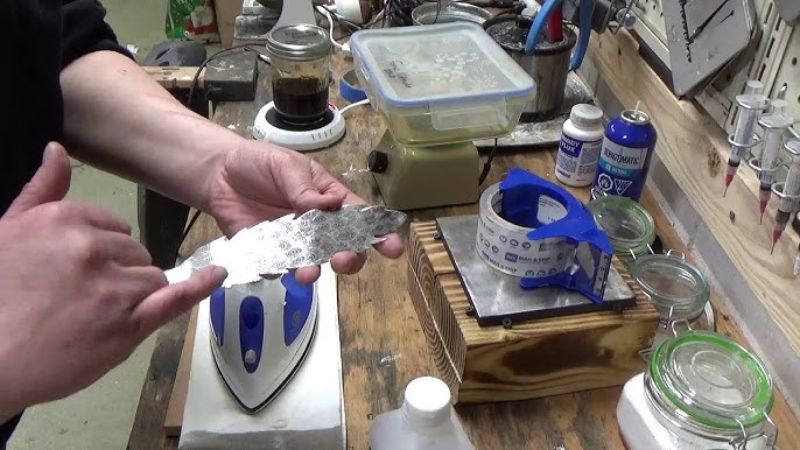
The first step of metal etching techniques is to choose the right metal or material. Some metals react faster with the chemical. On the other hand, other material takes time. Your choice affects etching time, sharpness, and the final result.
Common metals used for etching:
- Copper
- Brass
- Stainless steel
- Nickel
- Aluminum
Always choose the thin and smooth metals because they work best for detailed work. If your design needs strength, go for a thicker material. Always check that the metal is compatible with the etchant you plan to use.
Step 2: Clean and Prepare the Surface
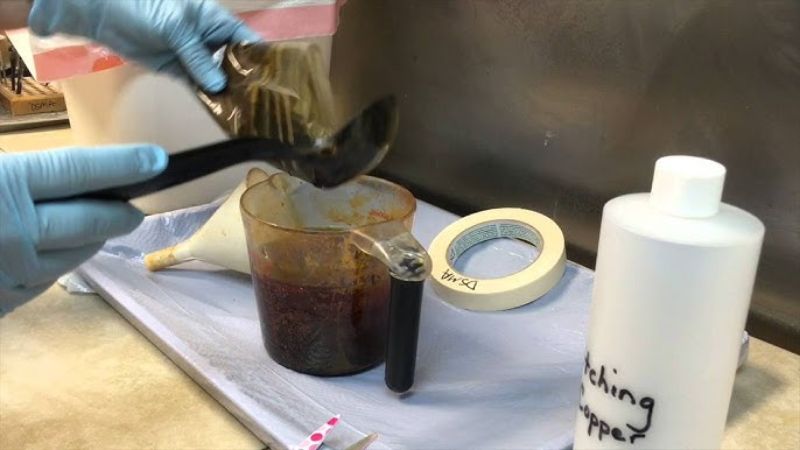
If you want to get accurate results, then your surface should be neat and clean. When your surface is greasy, oily, or dusty, the etching won’t be even. It might miss spots or bleed into areas you want to protect. Use a strong degreaser or alcohol to wipe the metal clean.
For better bonding, lightly sand the surface to remove oxidation and create a grip for the resist layer.
Steps:
- Wipe down with isopropyl alcohol or acetone
- Lightly sand or scrub using a fine pad
- Rinse with clean water
- Dry with a lint-free cloth
If you skip this step of the easy method to etch metal at home, it can lead to incomplete designs.
Step 3: Apply a Mask or Resist Layer
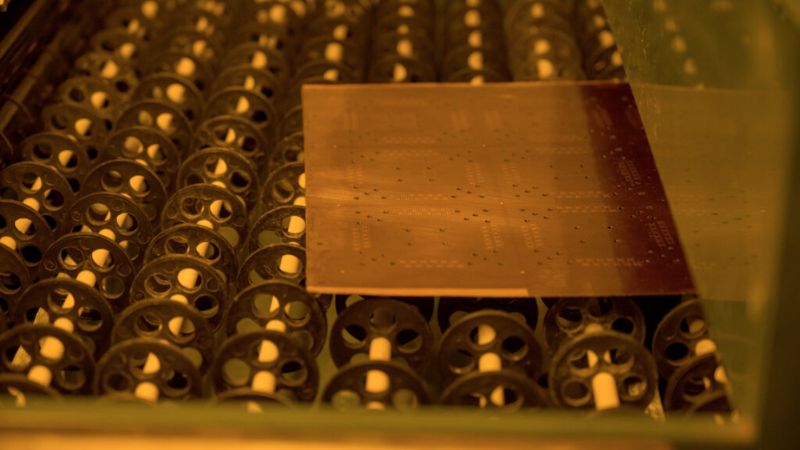
The next step of metal etching techniques is to apply the mask layer that blocks the etchant from parts of the metal. This resist protects your design and leaves the exposed areas to be etched.
Types of resist:
- Photoresist film
- Vinyl stencil or tape
- Permanent marker
Make sure the resist is pressed down. So, there are no gaps or air bubbles left on the surface to etch. Edges should be tight, especially if your design has fine lines. Let any liquid resist drying fully before moving forward.
Step 4: Transfer Your Design
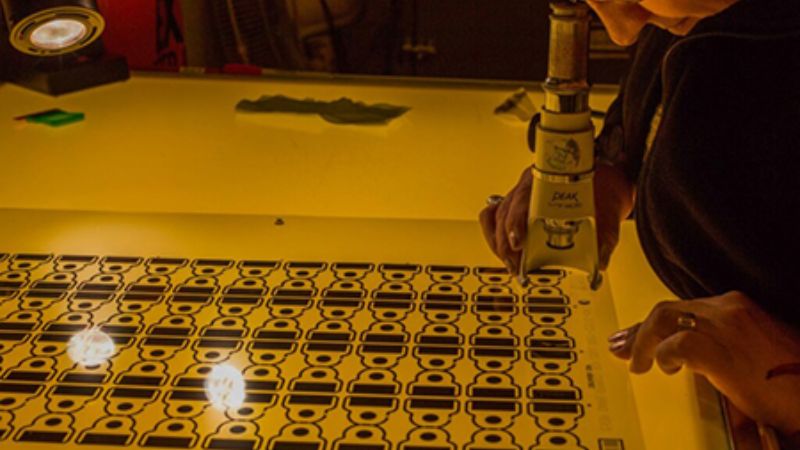
It depends on the method you’re using for metal etching. If you are using photochemical etching, you can place a printed mask over the photoresist. Then expose the metal to UV light for a short duration. It hardens the pattern areas and leaves the rest soft for development.
You can use a stencil to mark your design for the manual method.
Options:
- UV exposure box
- Hand-cut stencil
- Freehand sketching
Make sure the design is complete and well-detailed. Any mistakes at this stage will ruin all your efforts and money.
Step 5: Etch the Metal
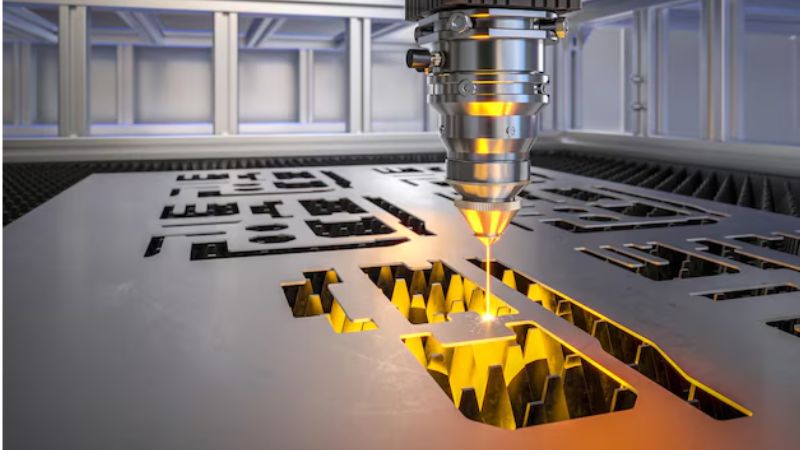
When your design is ready, dip the metal part in an etchant solution. You can use a plastic or glass tray to hold the chemical. Make sure you wear gloves and goggles and work in a well-ventilated space.
Common etchants:
- Ferric chloride
- Hydrochloric acid + hydrogen peroxide
- Nitric acid
How to make custom etched metal signs:
- Dip the part fully metal into the solution on
- Lightly move the solution
- Give some time, like 5 to 20 minutes
- Check progress often, but don’t leave it too long
The DIY metal etching average timing depends on your etch results. If you want a deeper etch, it takes a long time and strong chemicals.
Step 6: Rinse the Metal
After the etching process is complete, stop the chemical reaction immediately. Then neutralize the acid, protect the metal part, and make it safe to handle.
Steps for metal rinse:
- Mix baking soda with water
- Dip the part for 2–3 minutes
- Scrub gently
- Rinse under clean water
- Dry with a cloth
Step 7: Remove the Resist
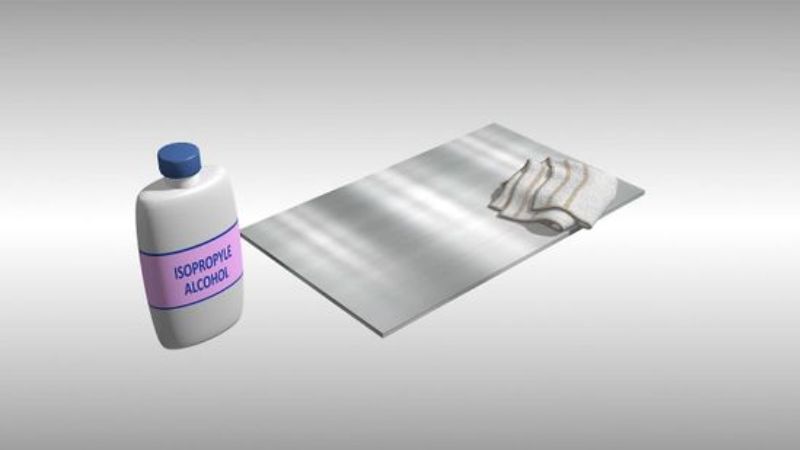
This is the last step to clean off the resistors. It gives you the final look. You can use a solvent or other detergent for it.
Resist removal options:
- Use acetone
- Strip off the vinyl carefully
- Scrub lightly
After removing the resist, inspect the part carefully. If further cleaning is needed, do light sanding on the metal surface. This is the same process you can use for how to etch metal for jewelry making.
Safety Precautions When Etching Metal

The metal etching process uses strong chemicals and UV lights. So, it’s important to take some safety precautions. These safety habits help avoid mistakes and protect both the part and the person doing the work.
Always Use Personal Protective Equipment
You should always wear full safety gear before starting the acid etching of metal. Chemicals in the etching process can burn your skin and hurt your eyes. You should wear gloves to keep your hands safe. A lab coat protects your clothes and arms.
Work in a Ventilated Area
The acid etching metal creates gas that can hurt your nose, throat, or lungs. It’s not safe to breathe these for long. That’s why you should never etch in a closed or tight room. Always work near a window or use a fan to move air out.
Safe Handling and Disposal of Chemicals
Chemicals used in etching should be handled like lab materials. Never pour old or used etchant down the sink. Store them in strong containers. Always wash your hands after the job. When done, send used chemicals to a proper waste center.
FAQs
What do you use to etch metal?
You need a strong chemical for metal etching. Ferric chloride is a common one. You also need a mask to cover the areas you don’t want to apply chemicals to. The metal is cleaned, the design is applied, and then it goes into the etchant. After etching, you rinse and clean the part.
Why is soap used in etching?
Soap is used in metal etching to clean the surface. It helps remove oil, grease, or dirt from the metal. A clean surface is very important. If the metal is dirty, the etch won’t work well. Using soap before etching makes sure the metal is ready.
What liquid is used for etching?
The most common liquid used for etching metal is ferric chloride. It works well on copper and other soft metals. For stronger metal, the hydrochloric acid may be used. They react with the metal and slowly remove the exposed parts. The type of liquid depends on the metal you are etching.
Final Thoughts
To sum up, learning how to etch metal helps you to fine-tune the details of metal parts. It also gives clean results without using high heat. This is why many industries now pick etching over old cutting methods. It’s important to avoid general mistakes that can ruin your whole process. A selection of wrong etchants changes the geometry of your metal parts. So, the end results won’t be the same as you expected. Some brands or manufacturers offer a metal etching process while maintaining quality and price.
